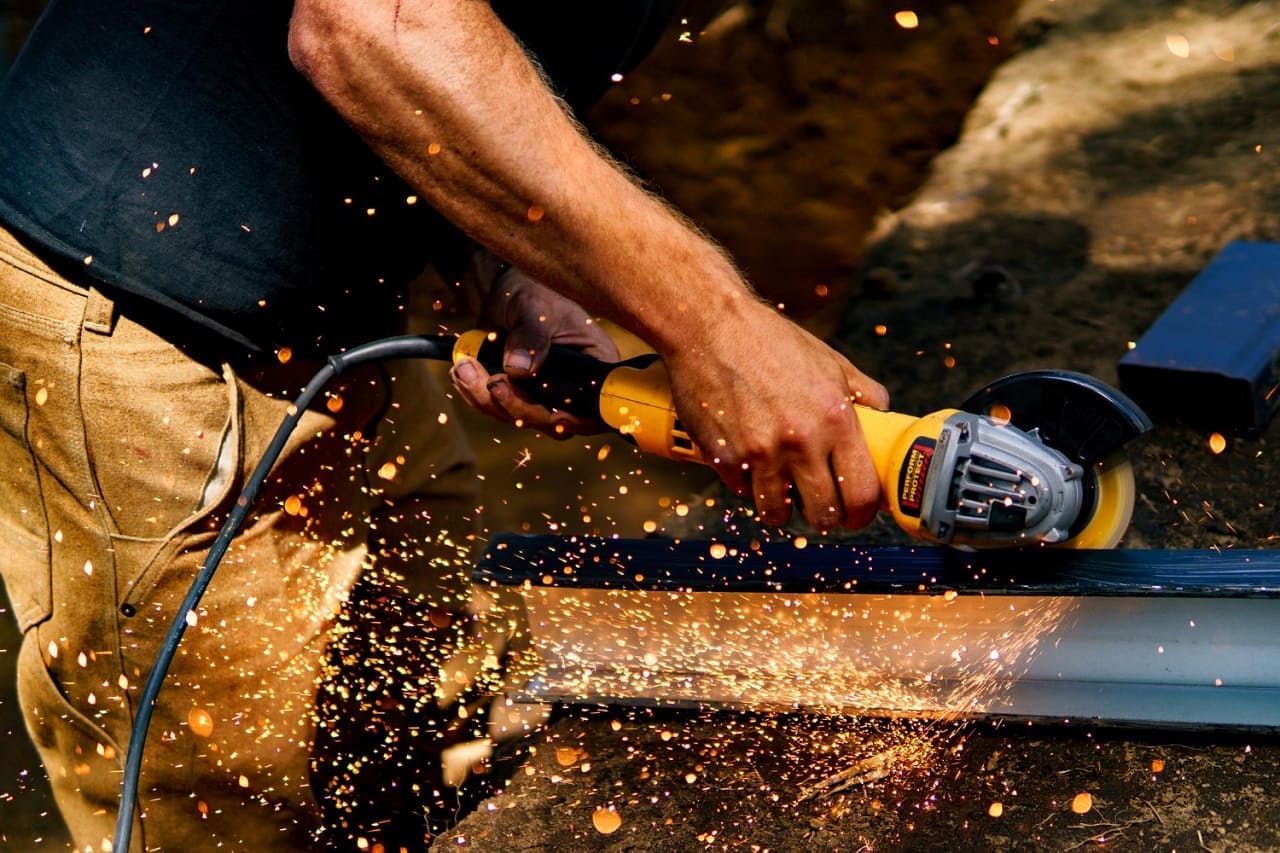Angle Grinder Power Tools: Uses and Maintenance Tips
Angle grinders are versatile power tools that every DIY enthusiast and professional tradesperson should consider adding to their toolkit. With their ability to cut, grind, and polish various materials, angle grinders offer exceptional functionality across a range of applications. This article explores the uses of angle grinders and provides practical maintenance tips to ensure their longevity and optimal performance.
Understanding Angle Grinders
An angle grinder, also known as a disc grinder, is a handheld power tool equipped with a rotating abrasive disc. This tool is used for a variety of tasks including cutting metal, grinding welds, and polishing surfaces. Angle grinders come in different sizes and power ratings, making them suitable for both light-duty and heavy-duty tasks.
Common Uses of Angle Grinders
Cutting Metal
Angle grinders are excellent for cutting through metal sheets, rods, and pipes. By attaching a metal-cutting disc, you can easily slice through various metal materials. This feature is particularly useful for fabricators and welders who need precise cuts for their projects.
Grinding and Sharpening
Grinding discs attached to an angle grinder are ideal for removing material, smoothing rough edges, and sharpening tools. Whether you are working on a metal surface or need to sharpen your garden tools, an angle grinder provides efficient and effective results.
Polishing Surfaces
With the right polishing pad, an angle grinder can be used to achieve a high-gloss finish on metal and stone surfaces. This is particularly useful for automotive detailing and finishing masonry work.
Removing Rust and Paint
For renovation projects, angle grinders with wire brush attachments can remove rust and old paint from surfaces. This makes the tool invaluable for preparing surfaces before repainting or refinishing.
Cutting and Shaping Stone
Equipped with diamond blades, angle grinders can cut through stone, tile, and concrete. This capability is useful for masonry work, tile installation, and other construction tasks.
Choosing the Right Angle Grinder
Selecting the right angle grinder depends on the specific tasks you need to accomplish. Consider the following factors:
- Size: Angle grinders come in various sizes, typically ranging from 4.5 inches to 9 inches. Smaller grinders are ideal for detailed work and tight spaces, while larger grinders are better suited for heavy-duty tasks.
- Power Rating: Angle grinders are available in different power ratings, usually measured in watts or amps. Higher power ratings offer more cutting and grinding force but may also be heavier and more challenging to maneuver.
- Disc Type: Depending on the material and task, you will need different types of discs. Ensure you choose the correct disc for cutting, grinding, or polishing.
- Safety Features: Look for grinders with safety features such as adjustable guards and ergonomic handles. These features help prevent accidents and improve comfort during use.
Essential Maintenance Tips
To keep your angle grinder in top condition, regular maintenance is crucial. Follow these tips to ensure your tool remains reliable and performs effectively:
Regular Cleaning
After each use, clean the angle grinder to remove dust and debris. Use a brush or compressed air to clean the vents and motor area. This helps prevent overheating and extends the lifespan of the tool.
Inspect the Disc
Check the condition of the abrasive discs regularly. Replace discs that are worn, damaged, or cracked. Using damaged discs can cause accidents and reduce the tool’s efficiency.
Lubricate Moving Parts
Angle grinders have various moving parts that require lubrication to function smoothly. Apply a suitable lubricant to the gears and bearings to reduce friction and wear.
Check for Loose Screws and Bolts
Vibration from the angle grinder can cause screws and bolts to loosen over time. Regularly check and tighten these components to ensure the tool remains stable and safe to use.
Replace Worn Brushes
The motor brushes inside the angle grinder wear out over time. To keep them operating at peak efficiency, replace them as advised by the manufacturer.
Store Properly
When not in use, store the angle grinder in a dry, clean place. Avoid exposing it to moisture and extreme temperatures, which can damage the tool and reduce its lifespan.
Safety Precautions
Angle grinders are powerful tools and can be dangerous if not used correctly. In order to avoid mishaps and injuries, always abide by safety instructions:
- Wear Protective Gear: Always wear safety goggles, gloves, and a dust mask to protect yourself from flying debris and dust.
- Secure the Workpiece: Ensure the material you are working on is securely clamped or held in place to prevent it from moving during cutting or grinding.
- Use the Correct Disc: Make sure you use the appropriate disc for the task at hand. Using the wrong disc can lead to poor results and increase the risk of accidents.
- Follow Manufacturer Instructions: Read and follow the manufacturer’s instructions for operating and maintaining your angle grinder. This ensures safe and effective use of the tool.

Buy Power Tools online at Safatco Trading
Angle grinders are indispensable tools for a wide range of cutting, grinding, and polishing tasks. By understanding their uses and following proper maintenance and safety practices, you can maximize the efficiency and lifespan of your angle grinder. Whether you are a professional tradesperson or a DIY enthusiast, mastering the use of this versatile tool will enhance your ability to tackle various projects with precision and ease.







